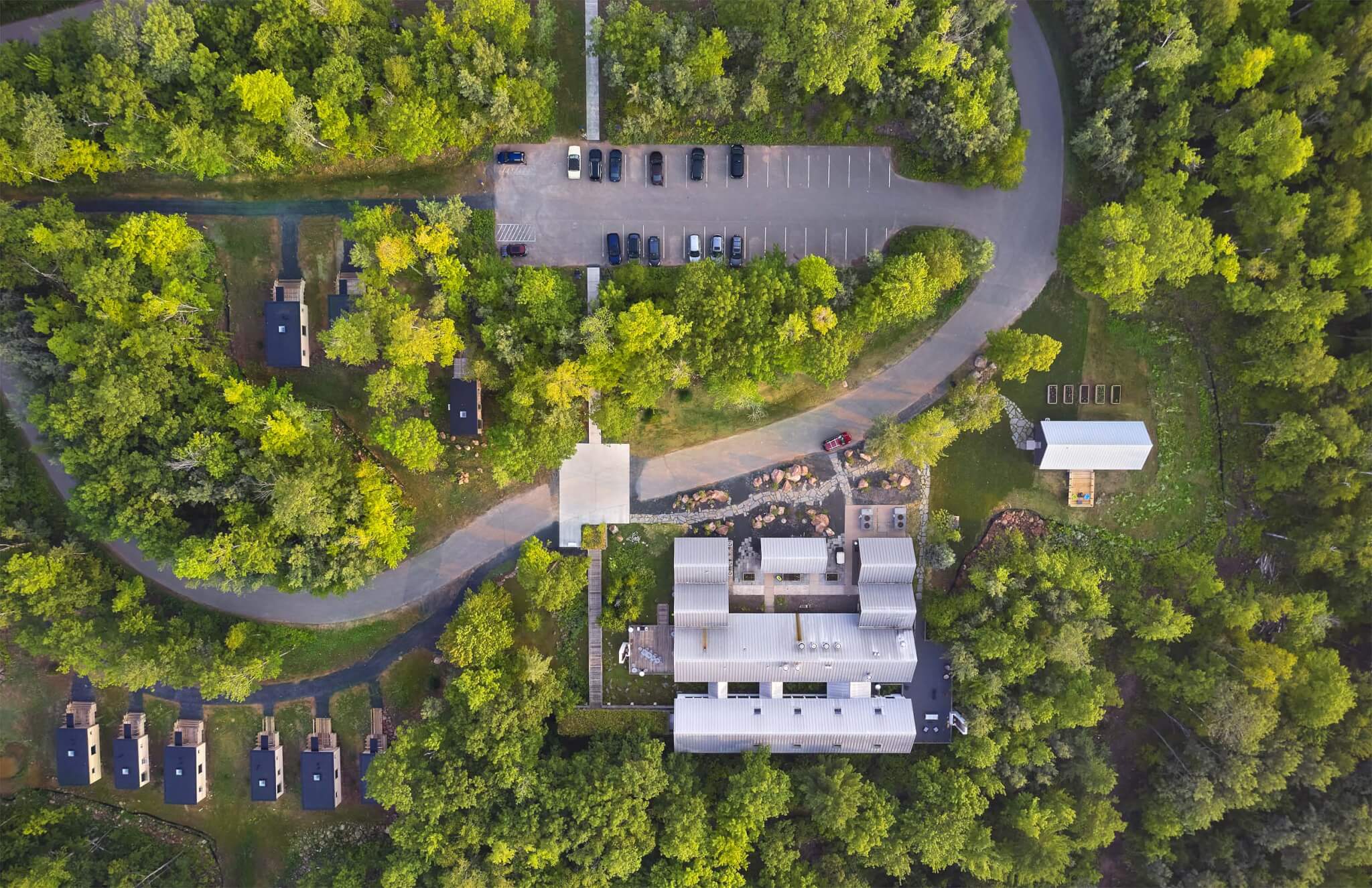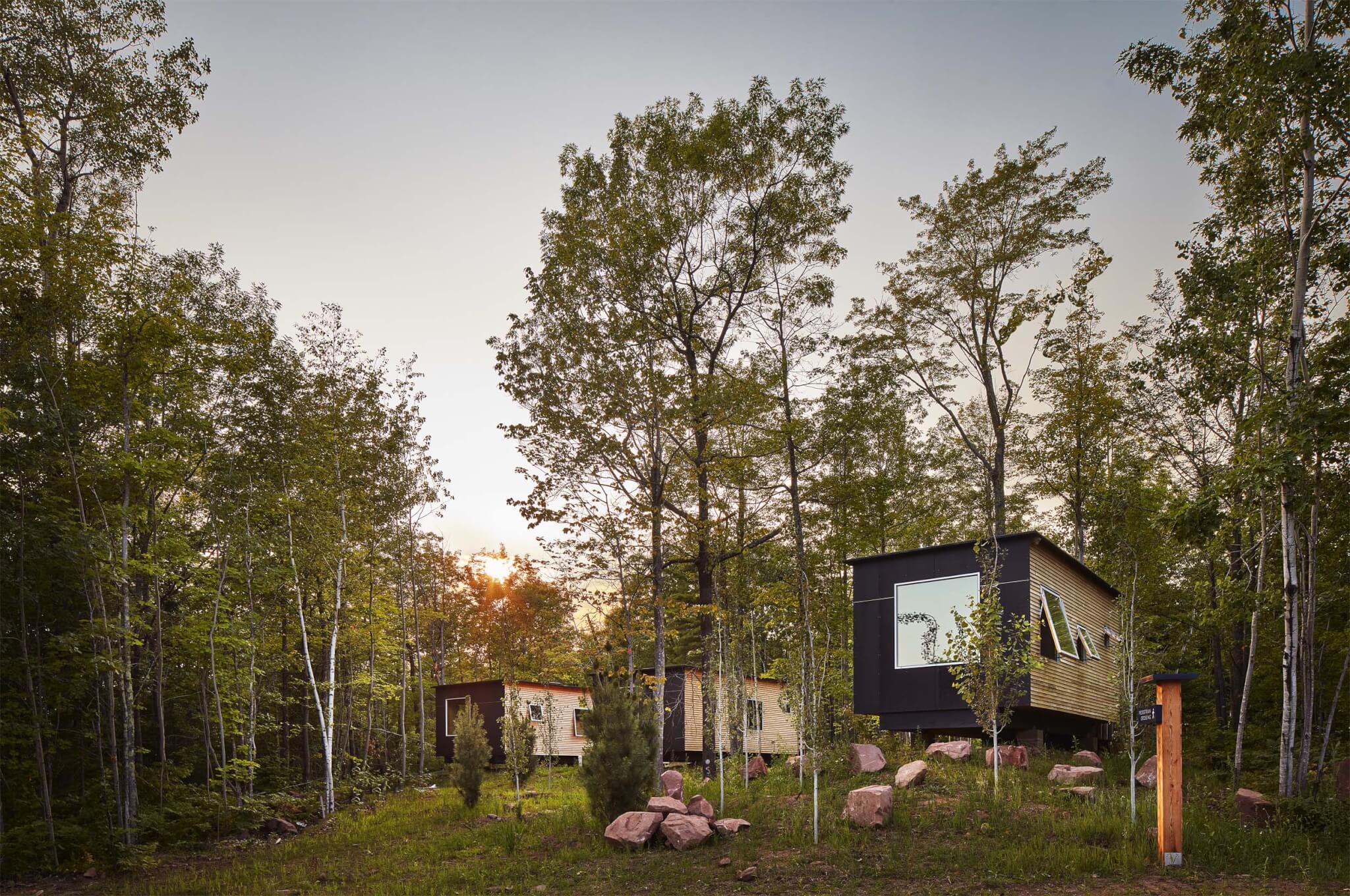Salmela Architect expands a restaurant of its own design to become Wild Rice Retreat, a center for arts and well-being
What are architects to do when asked to update a building they designed? Change nothing? Fiddle to fix past mistakes? Treat it as a palimpsest and go about what needs to be done? This was the challenge of Wild Rice Retreat for architect David Salmela.
Salmela originally designed Wild Rice as a destination restaurant on a wooded, sloped site overlooking Lake Superior in Wisconsin. The venue’s patron was Mary Rice, part of the family that owns Andersen Windows; Salmela remembered that the eatery’s name came not from the grain but instead from her distinctive character. The four gabled forms, hollowed by an interior courtyard, run perpendicular to the grade. The final one, the dining room, is pulled away from the others, allowing light to enter from five directions, including the skylights. The trusses supporting the 12:12-pitched roof were—and are—painted red. The result won Salmela an Honor Award from AIA Minnesota in 2005.


Though it was a popular place during tourism season, in time the restaurant closed. In 2018, Heidi Zimmer, a developer from Minneapolis, bought the place and began to operate it as a retreat center; the dining hall became a yoga studio and classroom space. The issue was housing—there was none—and Salmela Architect was brought on to solve this need. Rather than building a compact dormitory, Salmela designed three types of individual cabins and placed the residences in groups across the terrain. Two additional shared buildings begin to turn what was once a single complex into a campus.
Salmela located a 960-square-foot “peace pod” next to the original building to be used for gatherings; it sports an overlook and garden beds. In a clearing off to the west, a wood-lined sauna offers another respite. A parking lot collects guests’ cars so the expanse can be navigated on vehicle-free pathways.


Wild Rice Retreat has 35 rooms across seven “Ricepods,” eight “Nests,” and five “Treehauses.” The Ricepods are compact 312-square-foot structures with an entry porch and two twin beds. The 480-square-foot Nests include a sitting area and a private bedroom. The two-story, 1,548-square-foot Treehauses offer four bedrooms, each with its own bathroom. The smaller cabins are perched above the land on piers, while the Treehauses are set on cinder-block foundations. Their upper story is taller than the lower one and cantilevers out to make a covered porch; inside, the kitchen/living room has windows on three sides. All cabins are faced in cedar siding (unfinished and painted blue) and Richlite panels with interiors lined in drywall and basswood. Salmela, Zimmer, and TVL Studio are currently at work on a second phase that will add homes available for purchase to the retreat.


The realized improvements maintain a distinctive, open outdoor fireplace that Salmela designed for the original Wild Rice, an element seen in many of the architect’s private homes. The shallow C–shaped structure, built in brick and painted white, is a vertical marker. “It’s about this primitive idea of the beauty of sitting around a campfire at night,” Salmela said. But the morning after, things don’t look so hot. With this shape, the smoke still runs up the inside surface; the resulting accreted soot looks like a Robert Motherwell painting, Salmela mused. It also reads like a ruin, as if a prior building set around the hearth had burned down, with only a column remaining.
Last year, Wild Rice Retreat won a Commendation for Excellence in Design for Well-Being from AIA Minnesota. Over the years, people have visited Wild Rice and, inspired, called Salmela to initiate their own projects. “The phone keeps ringing,” the architect noted. “I still can’t figure out why these people come to us. But they appear.”

Wild Rice Retreat is one reason. Zimmer said, “It’s hard not to feel anything but a big sigh of relief and joy when you arrive.”


